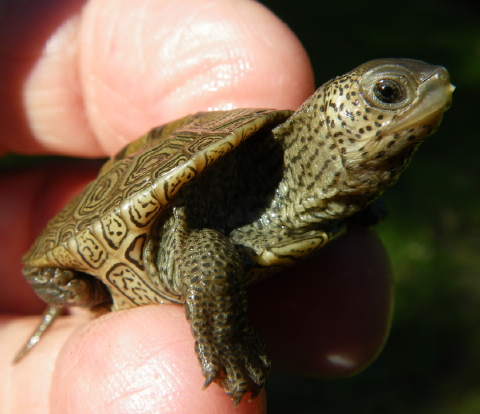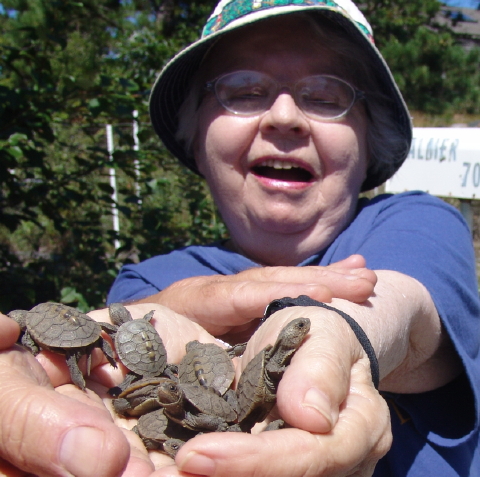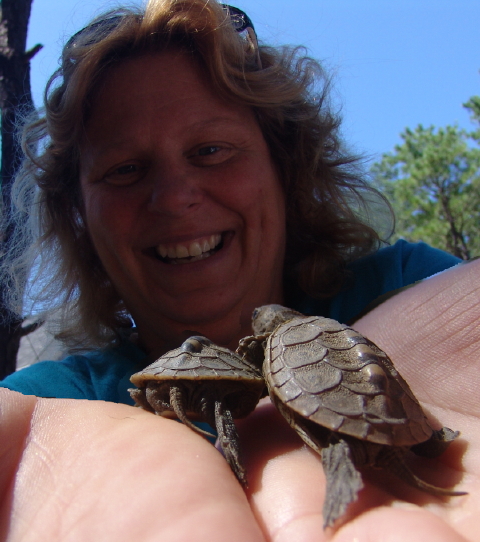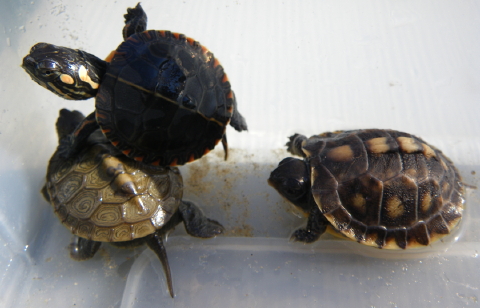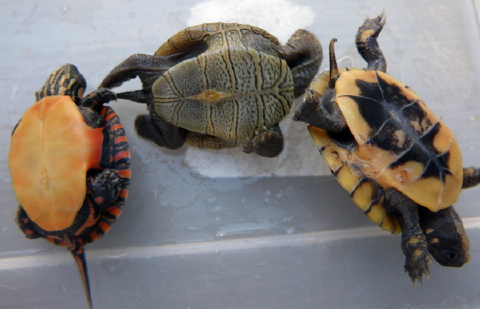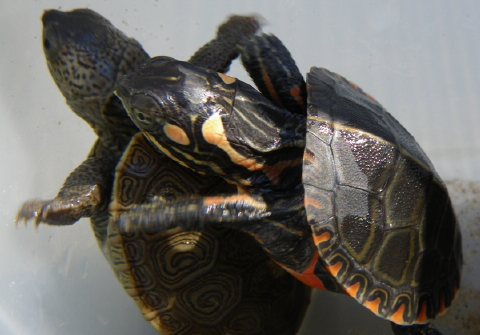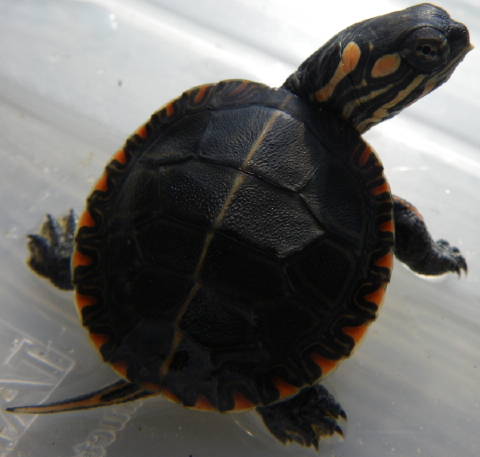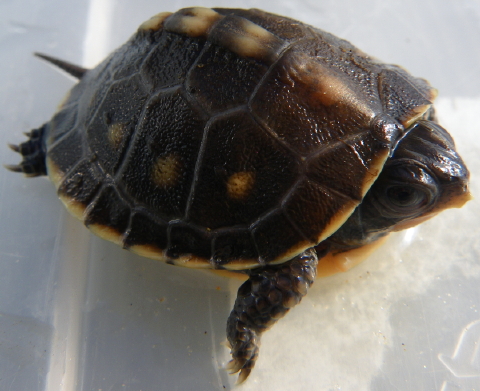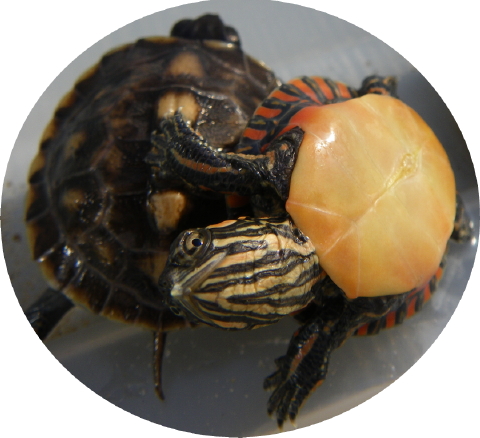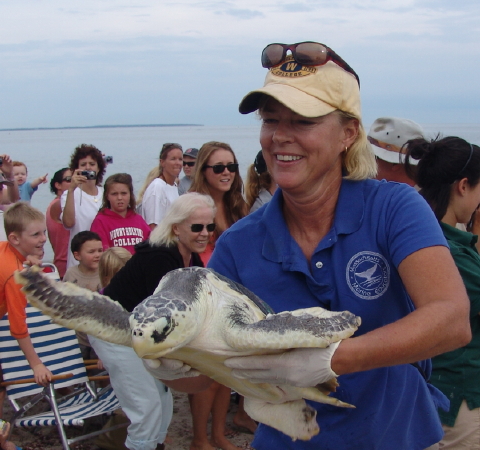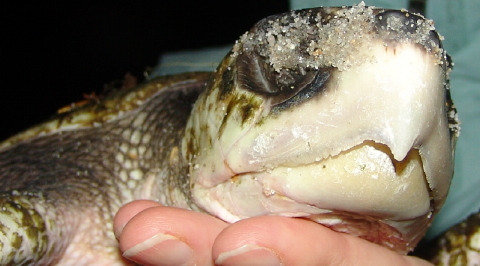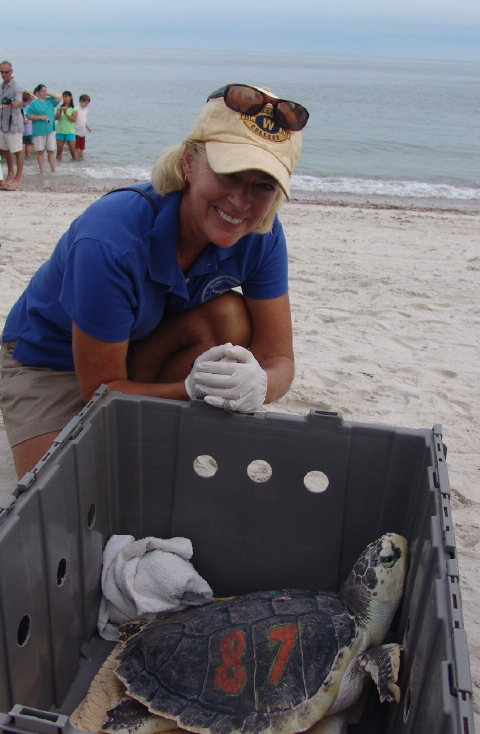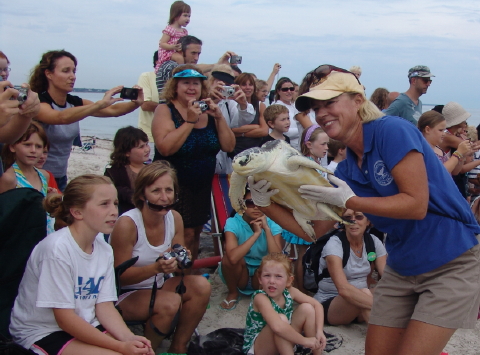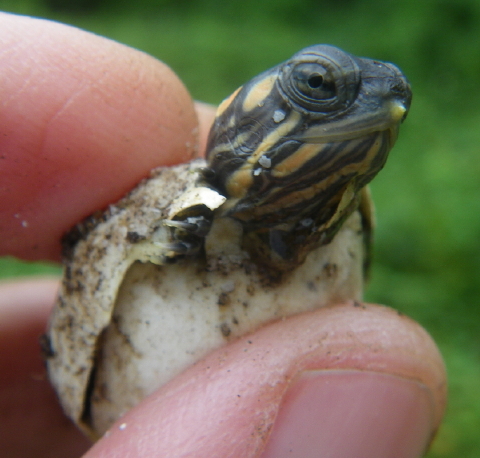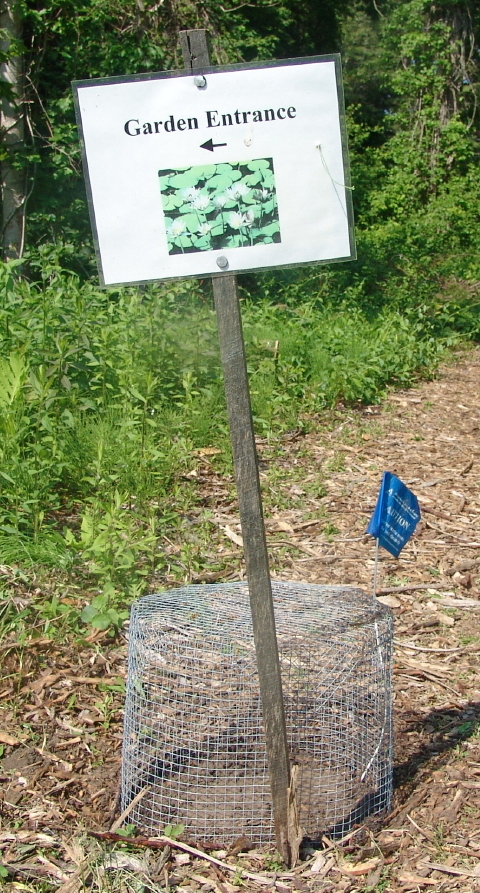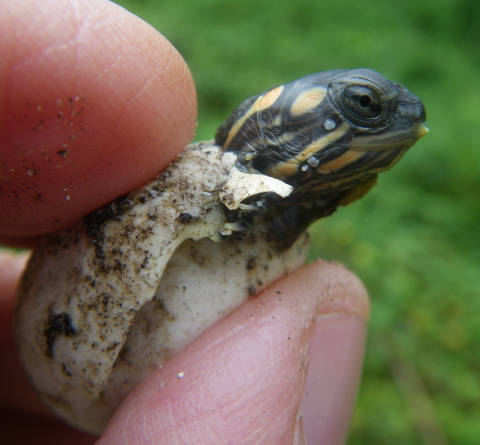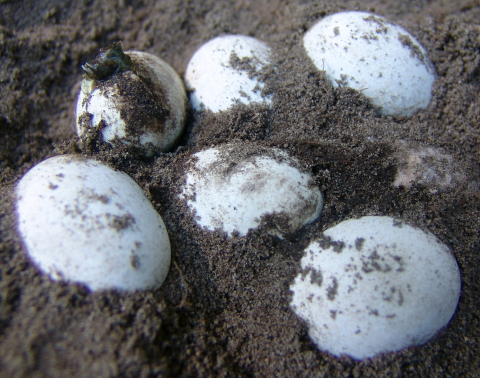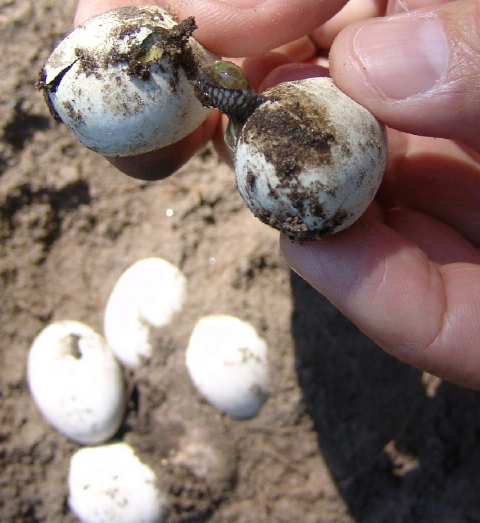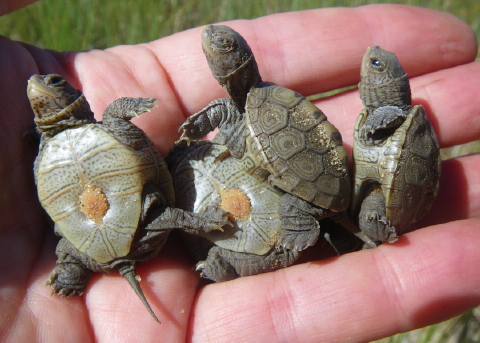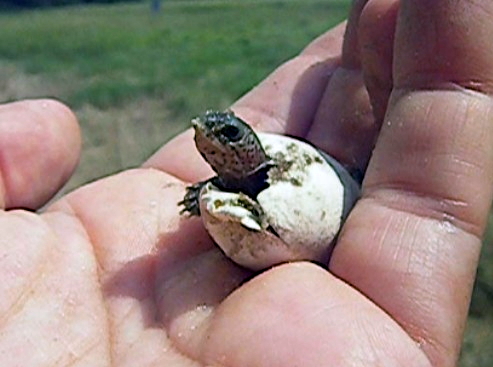Diamondback Terrapin Hatchling
August in the Great White North brings the miracle of birth for tiny turtles that have incubated under New England’s warm summer soil since June. Diamondback terrapins erupt from sandy dunes dotting the coastlines of Cape Cod and Buzzards Bay. Painted turtles and snapper hatchlings squiggle out of emergence holes surrounding ponds, lakes and rivers throughout the Northeast. Eastern box turtle babies tunnel to daylight in backyards and woodland edges only to disappear under bush and leaf matter for the next several vulnerable years.
Don Lewis Documents Hatchling Emergence with Droid X
Perfect pre-autumn days with blue skies and warm rays baking the landscape encourage hatchlings to break for freedom from their subterranean nests. Eggs that have cooked for sixty days under the protection of predator excluders have transformed to perfect miniature turtles ready to take on the world. When they reach the surface, though, they confront an unlikely and unnatural barrier: the wire cage. Little do they realize, of course, that the cage has protected them from the fate of 90% of nests that fall prey to voracious predators. Little do they appreciate that the cage keeps hungry birds from snacking on these potato-chip crunchy treats as they appear from the sand. For these hatchlings, the wired mesh is simply an obstacle that thwarts them from completing their natural imperative: scramble like the wind to find refuge in the thick salt marsh grass.
Jail Break at Turtle Point
Once nesting begins, Turtle Journal must check cages several times daily to ensure that baby turtles don’t become dehydrated in the hot sun. As they emerge, hatchlings are documented and then given a powerful survival boost by getting escorted across the most dangerous few feet of their lives, from barren sand dune to lush vegetation.
Â
Turtles, Turtles, All the Way Down!
There’s an old story that is recaptured in Stephen Hawking’s book, a Brief History of Time, about the ancient cosmological fable that the earth rests on the back of a turtle. When a simple country woman was quizzed with the caustic, “What then, madam, does the turtle rest on?” by a pompous cosmologist, she replied without hesitation, “You can’t trick me, young man. It’s turtles, turtles, all the way down.” And so it seems when you’re excavating turtle nests and you find a helical line of hatchlings tunneling to the surface.
Allison Palmer and a Fist Full of Turtles
Hatchling time is a joyous time. Residents who volunteered to protect these threatened critters when they were just tiny white eggs; residents who had guarded the nests in their backyards so tenaciously; residents who had patiently waited and waited and waited as the high suns of July had become the long shadows of late August; for these residents, now is the time of joy when all that protecting and waiting yields a crop of beautiful babies. Allison Palmer, our harbinger of spring awakening when she calls each April to report that terrapins have emerged from winter slumber, holds a batch of diamondback hatchlings.
Andrea Pengeroth and Hatchlings
Andrea Pengeroth, who watched with amazement as a mother turtle deposited a nest in her Lieutenant Island backyard, who watered the nest through summer’s drought, and who protected the eggs from all comers, greets a couple of newborn hatchlings.
Diamondback, Painted and Box Hatchlings
Of course terrapins aren’t alone in this birthing season.  In the Turtle Journal rescue center, we have three species of bouncing babies: terapins, painted turtles and box turtles. Each species has its own unique personality to match its wonderfully different colors and designs.
Bottoms Up: Painted, Diamondback, Box
Even from a bottoms-up perspective, they reflect their own individuality as a species.
Turtle Dance — But Who Has the Lead?
And if you’re looking for antics, you need go no further than wathcing a painted turtle and a diamondback terrapin engage in faux dance step.
Painted Turtle Hatchling
Painted turtles are faily ubiquitous and are not listed as endangered within Massachusetts. Still, as we develop more and more of their natural habitat for our own purposes, these turtles too suffer from the pressure of human modernity.
Eastern Box Turtle Hatchling
The lumbering Eastern box turtle is a species of special concern in Massachusetts. This little hatchling was protected from a nest dug on the edge of the busy Route 6 highway in Mattapoissett.Â
Antics, Anyone?
Welcome to the hatching season!
